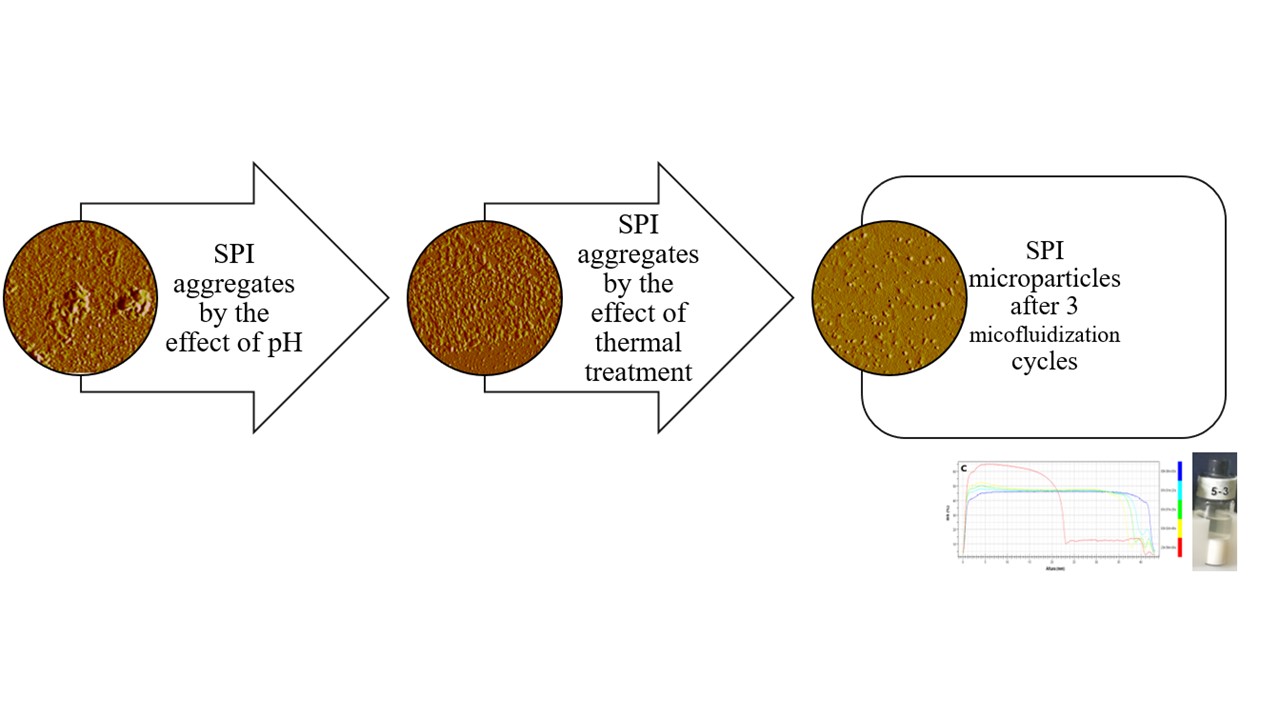 |
|
Protein microparticles are of interest in the development of low-fat foods as stabilizing agents and, for their production, it is important to consider the influence of the processing conditions on stability and size of particles. In the present study, the characteristics of microparticles of soy protein isolate (SPI) obtained by microfluidization (MF) (110 MPa and 3 MF cycles) of aggregates obtained by heat treatment (95 °C for 15 min) and different pH values (3 , 5, 7 and 9). The results of particle size, zeta potential and turbiscan stability index (TSI) showed that the least stable microparticles in suspension were obtained at pH 5, due to their proximity to the average isoelectric point of soy proteins (4.5). In contrast, the most stable microparticles in suspension were obtained at pH 9, presenting small particle sizes (398.35 ± 4.19nm) and a low TSI (0.8 ± 0.08). By means of atomic force microscopy (AFM) it was possible to observe the breakdown of the aggregates for the formation of microparticles during the microparticulation process. Surface roughness and image texture analyses allowed evaluating the effect of MF on the surface of the microparticles. The most relevant descriptor for the characterization of microparticlers was the second angular moment whereas contrast, correlation, inverse difference moment, entropy, and fractal dimension did not correlate with the characteristics of the images in the whole range of operating conditions given that their calculation algorithms are not sensitive enough to detect the small variations in roughness of the samples. The best conditions for production of microparticels were 3 cycles of MF and pH 9 which gave place to homogenous and stable systems.
Keywords: Microfluidization, soy protein isolate, microparticles stability, texture image analysis.
|
|
 |

